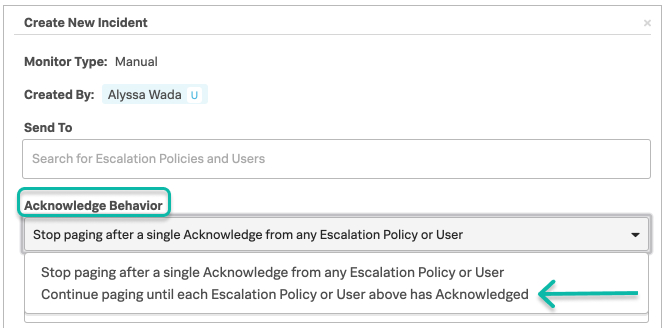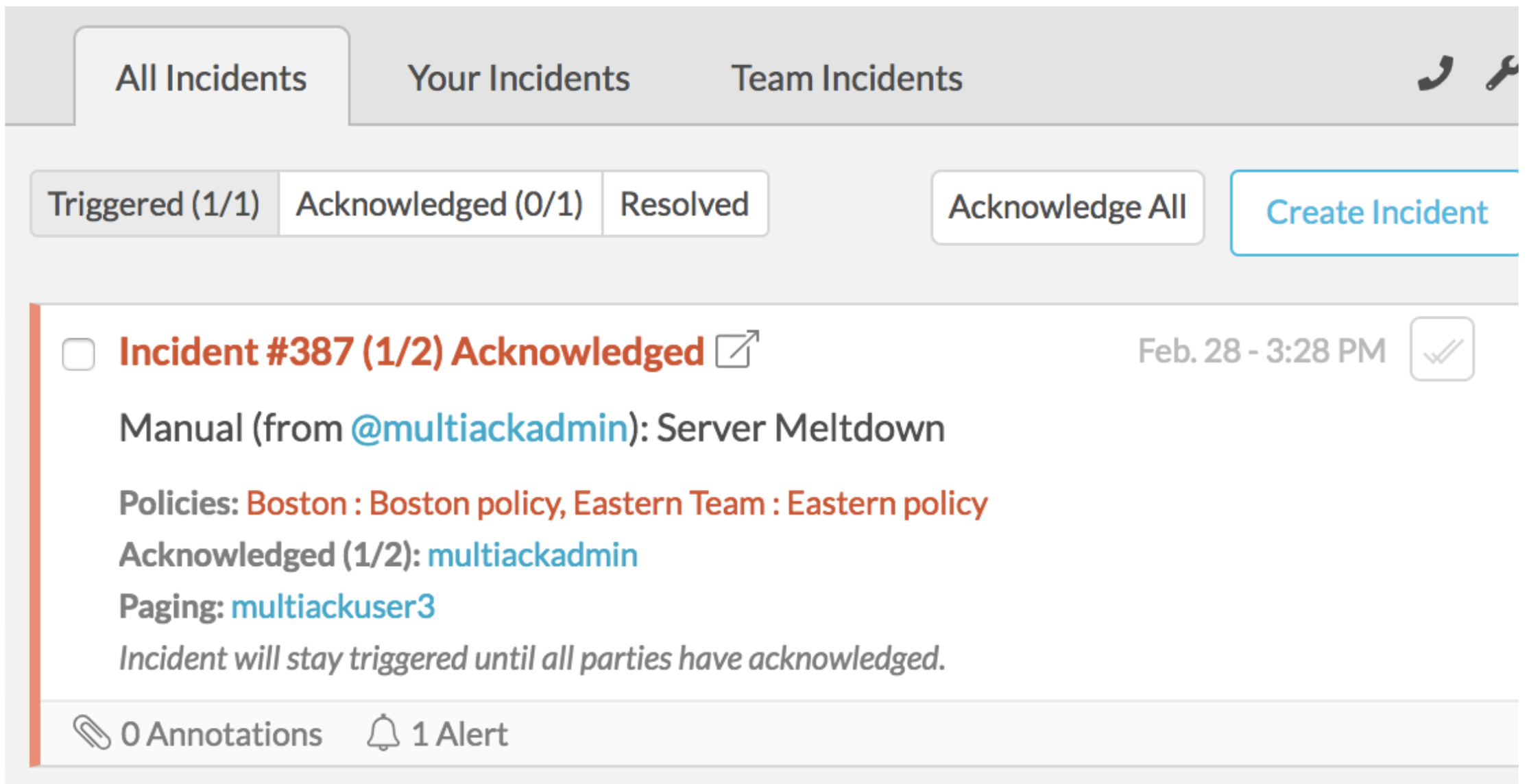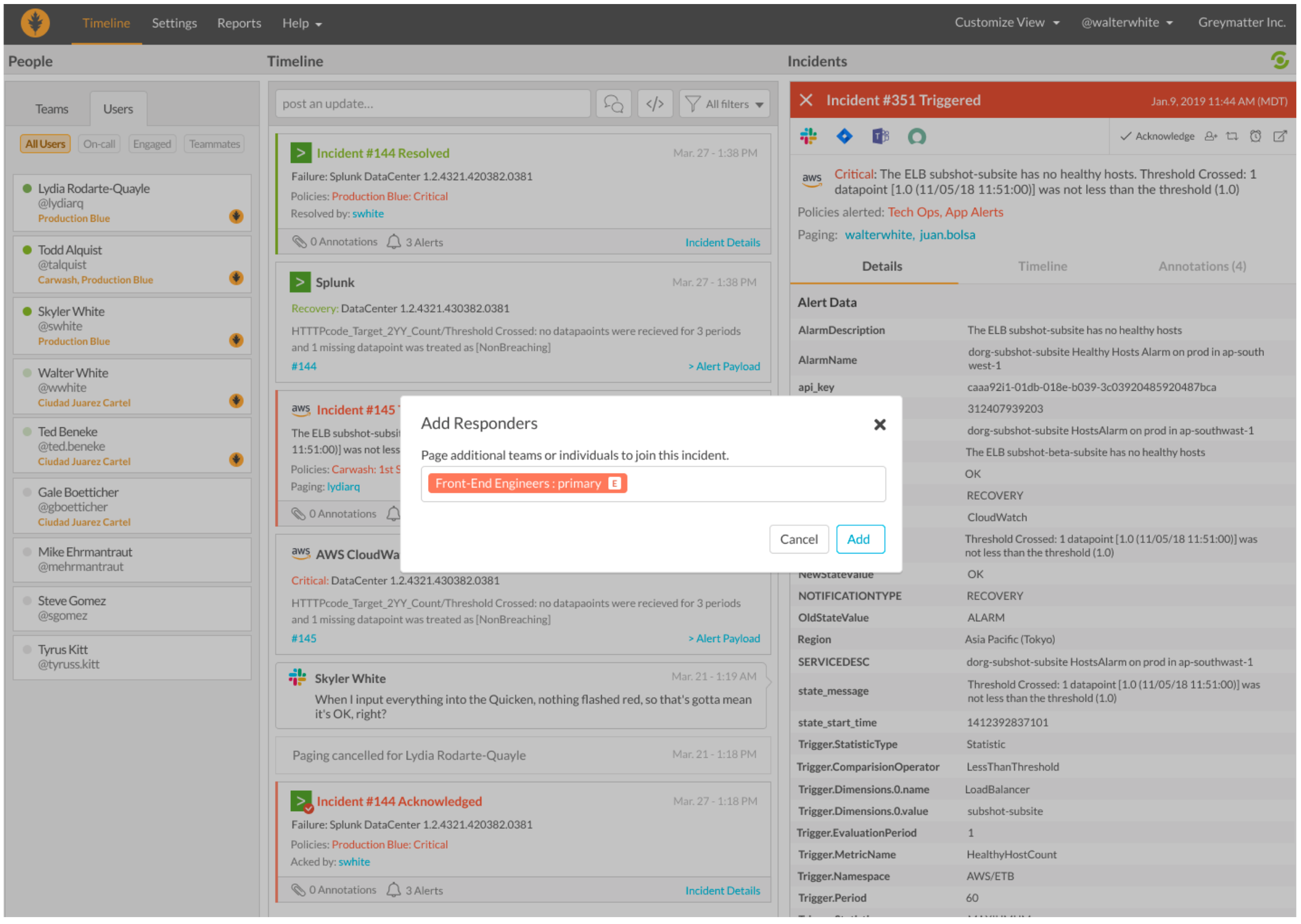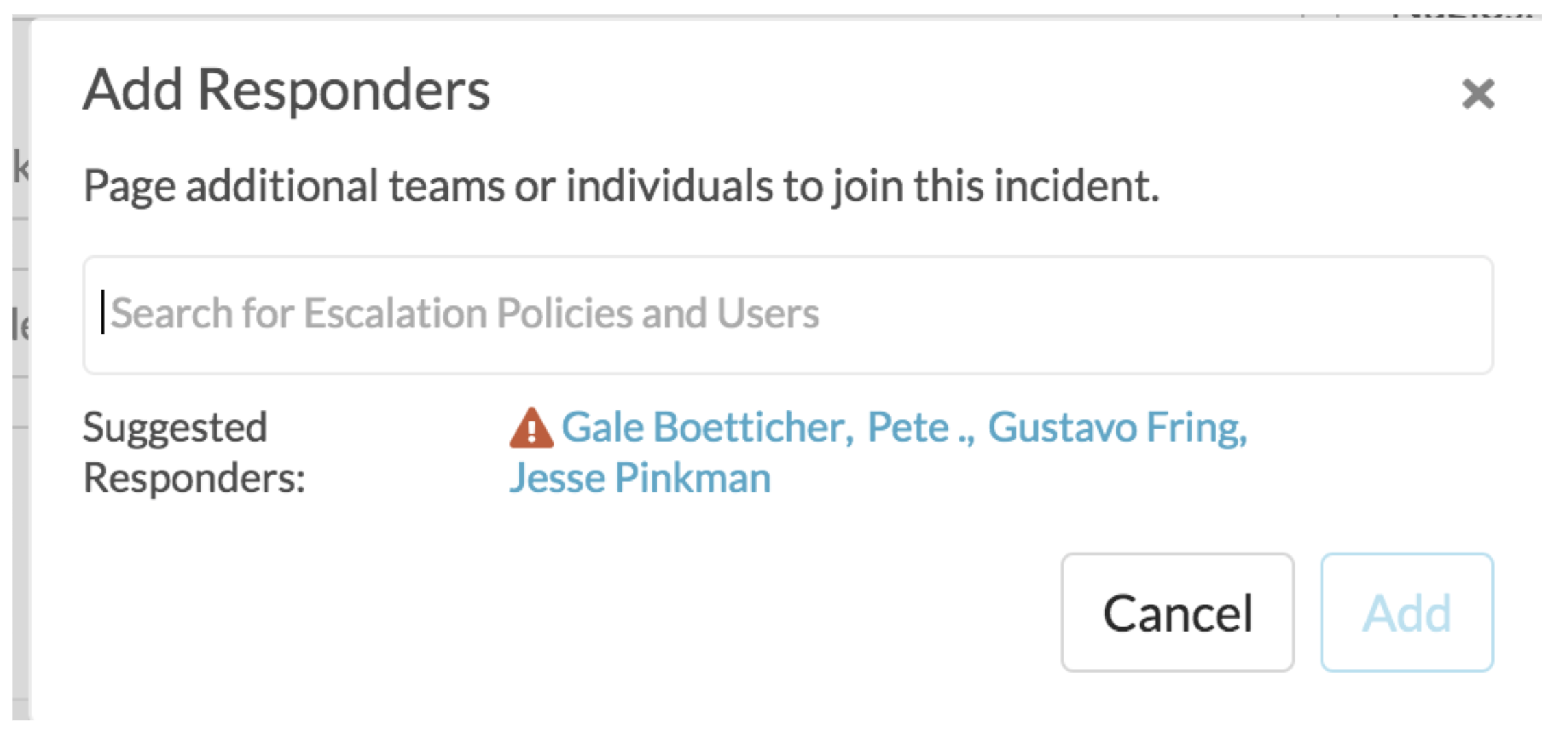Splunk On-Call allows you to quickly mobilize teams around an incident. While a regular incident only requires a single acknowledgement to stop paging, multi responder incidents require responses from each user or escalation policy being paged.
Please note: The ability to manually invoke Multi-Responder Incident Response (as opposed to it being automatically invoked via a Routing Key) requires an Enterprise level of service.
Cascading Escalation Policies
If an alert is sent to an escalation policy that references another escalation policy or set of escalation policies, and multi-responder is enabled, every first step in the escalation policy is required to respond if the parent escalation policy is called via manual incident or additional responder.
Using this, you may build response plays that allow you to organize multiple teams around an incident by calling on only one escalation policy.
Manual Incident – Multi Responder
You may manually send an incident to users and escalation policies, requiring an individual acknowledge per user or escalation policy.

When an incident requires multiple responders, it will not move to an acknowledged state until all required responders have acknowledged it. As an example, you will see the state of paging and progress of acknowledgement in the incident card in the below graphic.

Adding Responders to an Incident
You may require responder acknowledgement by clicking the responders icon and adding responders to a particular incident.

You will then be prompted by the following modal; here you are able to select which user or Escalation Policies to page and require individual acknowledgement. This is similar to reroute, but instead of cancelling paging via a singular Ack, each escalation policy or user must acknowledge to move an incident to an acknowledged state.

Suggested Responders
Splunk On-Call can suggest responders who are likely able to help. Splunk On-Call leverages information about user involvement in past incidents to suggest responders that may be added to incident response. If a user is currently not on-call a red warning symbol will appear next to the user’s name.

Automated Multi-Responder via Routing Keys
Splunk On-Call offers the ability to have multi-responder functionality automatically invoked on a Routing Key level.
Navigate to Routing Keys under Settings >> Routing Keys and click on the pencil icon that appears while hovering your mouse over an existing key. Next, check the checkbox on the Multi-Responder column and click the adjacent check mark to save the changes.
If multiple escalation policies are specified through the routing key, an acknowledgement will be required from each of them before the incident becomes fully acknowledged.